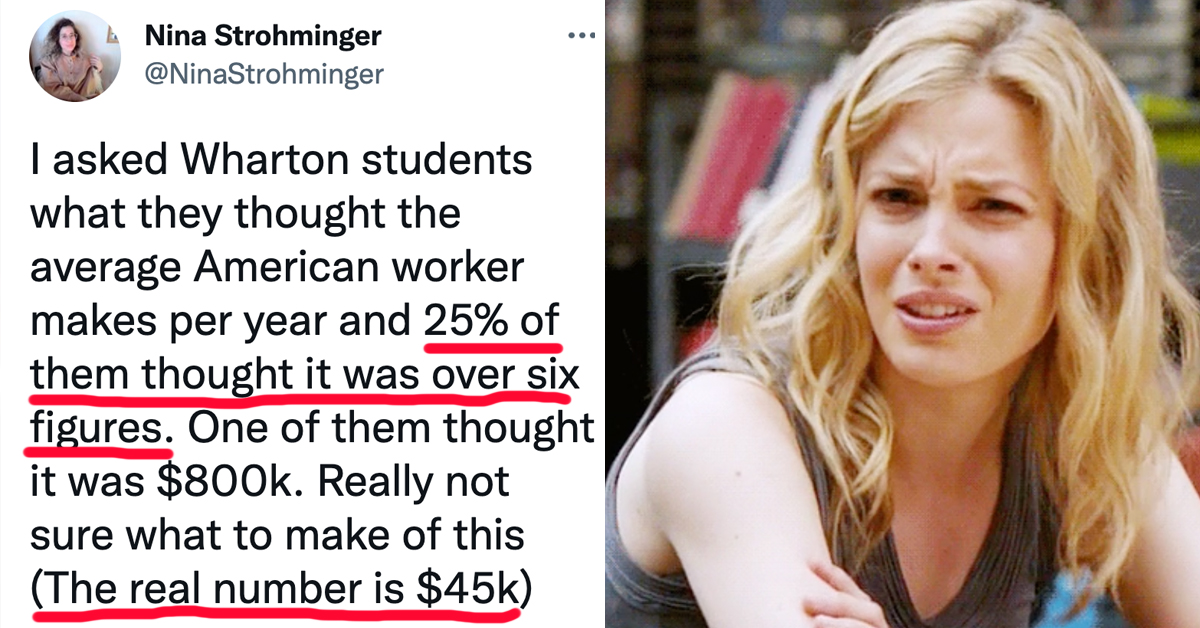Professor Says Business School Students Think Average Income Is Six Figures And Sparks Debate (15 Tweets)
Professors aren’t generally known for being “in touch” with “the kids these days…”
And that’s to be expected, cause they’re old, right? Well, this is a story about “the kids” themselves being wildly out of touch…
Professor of Legal Studies & Business Ethics at the Wharton School of the University of Pennsylvania Nina Strohminger started going viral on Twitter recently for a single tweet revealing how far off her students were from estimating the average income of a U.S. resident.
According to the business school professor, one out of four of the people in her classes thought that the average American made six figures, with the highest estimate being more than most of us could ever dream of making.

The Tweet, which reads: “I asked Wharton students what they thought the average American worker makes per year and 25% of them thought it was over six figures,” she reported. “One of them thought it was $800k. Really not sure what to make of this (The real number is $45k).” has gotten over 10k replies at press time.
Now, determining the average salary in the U.S. is a bit complicated due to the massive gaping void between the nation’s rich and the rest of us.
A true average salary can look higher than $45,000 per year depending on how it’s calculated, but in terms of the real individual income in 2019, the median amount, or the most typical amount, was just under $36,000.
The median earnings for full-time wage or salary workers were over $51,000, but not everyone works full time.
There are also considerable differences in these numbers depending on things like race, gender, and disability status.
In the end, however, the reality of what the average person in the U.S. earns for their labor is much lower than $100,000 no matter how you slice it. Whoever guessed $800,000 needs to figure out what planet they’re living on.
While many quickly assumed that this overestimation of average U.S. earnings was uniquely a Wharton problem or even just a business school problem, Strohminger pointed out in a follow-up tweet that difficulty guessing this number is a more universal problem than you might think.
This phenomenon could be partially blamed on the simple fact that this average is shockingly low and has stagnated for many years, with the federal minimum wage languishing at just $7.25 since 2009. It’s also a confusing number considering the fact that organizations like Pew Research consider a middle-class income to be between $48,500 and $145,500 as of 2018. How the average U.S. income could be below the lowest range of what is considered “middle class” defies logic.
At $45,000 per year, coming out to a wage of $23.94 assuming one works 40 hours per week, it would be difficult to impossible in many states (particularly the ones that tend to have jobs) to afford a “modest” two-bedroom apartment, according to the National Low Income Housing Coalition.
Those who are living on the average income or less seem more likely to be aware of these gaps, and those who make far more often prove themselves to be wildly out of touch. Many commenters have expressed being entirely fed up with it.

